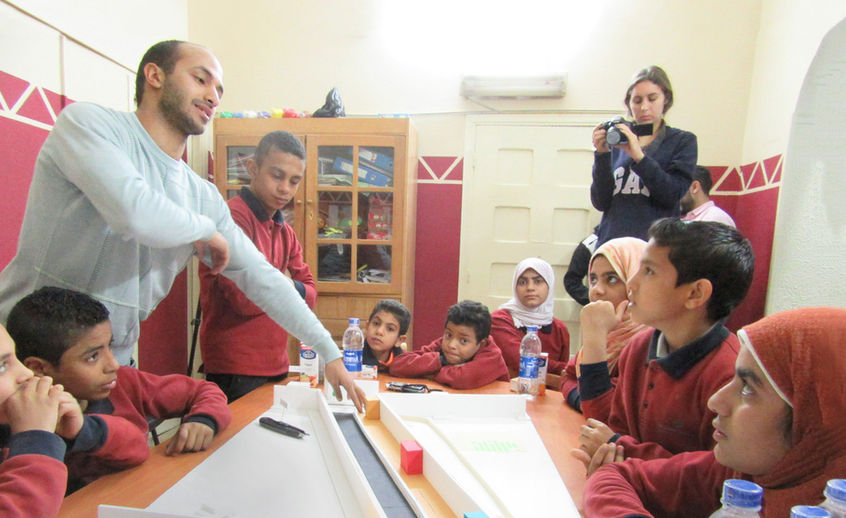Takween’s mission focuses on innovative and concrete solutions that have been researched, tested and implemented to meet the needs of communities and their specific built environments to achieve inclusive urban spaces that will thrive for generations to come. With this mission, Takween aims to improve the quality for inhabitants living in cities across Egypt and the Middle East.


Pilot Public Space & Environmental Upgrading
in Izbit Khayrallah
The construction of the Ring Road has introduced some negative implications to Izbit Khayrallah. The road’s path severed the neighborhood into two parts. The majority of the area’s services, including the only neighborhood school, are all located in the northern part of the area. As a result residents of the southern portion, especially women and children, who wish to benefit from these public services are able to cross under the Ring Road through five available tunnels
distributed along the Ring Road.
These tunnels, as well as the open public spaces surrounding them, suffer from deteriorated physical conditions, lack of public lighting, an accumulation of garbage, and high levels of pollution resulting from the Ring Road traffic.

Location:
Izbit Khayrallah, Cairo, Egypt
Duration:
May 2015 - August 2016
Project Partners:
The project was supported by the Embassy of Switzerland in Egypt (Office for International Cooperation), Cairo Governorate, Misr el Qadima District, Tawasol for Developing Istabl Antar NGO, Al Noor NGO, Nahdet Khairallah NGO, `Imar Khairallah NGO, Kheir Wa Baraka NGO, Arab Justice League for Lawyers “for Rights and Liberties” in Izbit Khayrallah, Ruwwad NGO, Mr. Aly Mahrous (Abou Ne`ma).
Objective:
The project aims at developing a comprehensive and inclusive upgrading plan for the public open spaces located along and underneath the Ring Road in Izbit Khayrallah, in participation with the area’s stakeholders (especially women and children), and the implementation of a pilot upgrading intervention in this area to be replicated by the authorities and other local partners.
The team developed design solutions for Omar Ibn El-Khattab tunnel, addressing issues of safety, connectivity,
environment, improved physical conditions, use of public space, the potential for street art; etc.
Publication:
Pilot Public Space and Environmental Upgrading in Izbit Khayrallah - Cairo Booklet
Scope:
1. Documentation and Needs Assessment Phase:
This phase included the documentation of the existing conditions and Participatory Needs Assessment (PNA) with the local stakeholders. It was completed with the assistance of a group of interns who covered the following aspects: documentation of public open space, traffic and mobility, environmental issues, existing activities, safety issues, etc.
This phase identified the problems facing each tunnel, as well as the means of circulation existent within Izbit Khayrallah. This helped in indicating the types of interventions that might be implemented in each tunnel.
2. Development of Selection Criteria and Evaluation of Options in Partnership with the Project Stakeholders
The team implemented the tunnel selection criteria by conducting a workshop and presenting the outcomes of the studies to representatives of the project stakeholders (local NGOs, local residents, and representatives of Cairo Governorate).
3. Omar Ibn El-Khattab Tunnel Selection and Status before the intervention
“Omar Ibn El-Khattab” Tunnel was selected by the project stakeholders due to its poor physical conditions, its repeated sewage overflow problems, its frequent use by local residents to reach the nearby Al-Zahraa Metro Station, and its extensive use by the children enrolled in the nearby schools. More importantly, this tunnel was also selected due to a number of fatal accidents occurring due to its deteriorated condition whenever the tunnel is flooded with the sewage water.
4. Design Process
The team conducted participatory design workshops with the local community members especially children and those living and working near the tunnel. The team also engaged other stakeholders such as local NGOs and Cairo Governorate representatives.
The purpose of these workshops was to address the main design content that suits the users of the space. The team carried out public presentations of the proposed solutions to residents of the area as well as other stakeholders to obtain their feedback.
5. Implementation
6. Before and After Photos








































